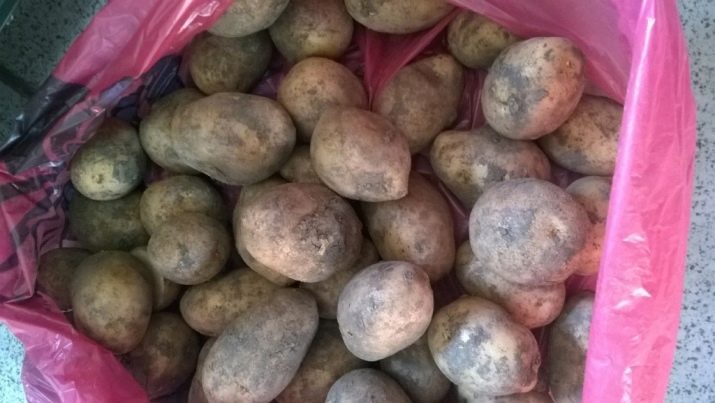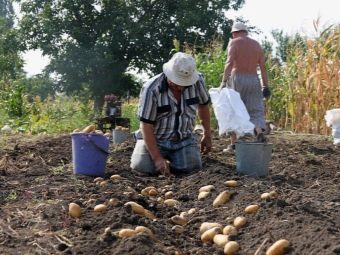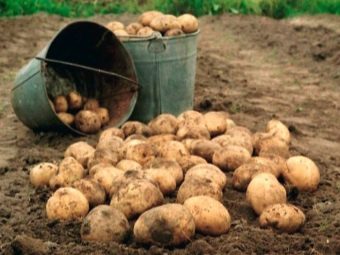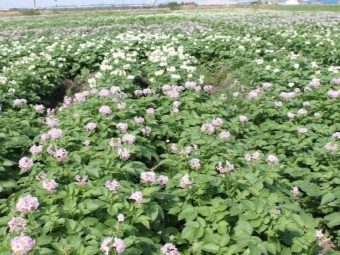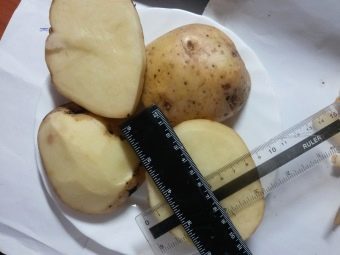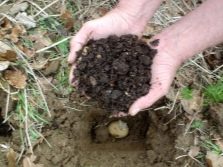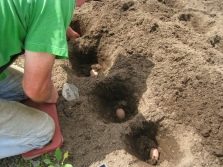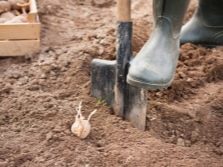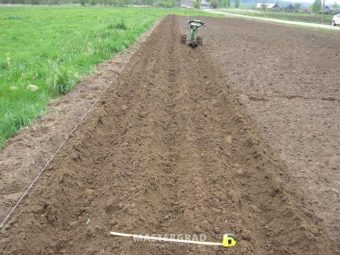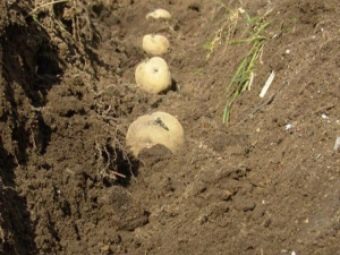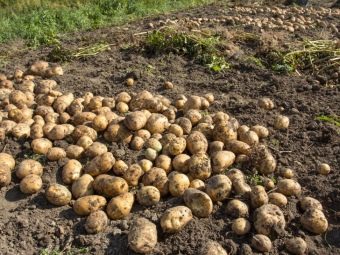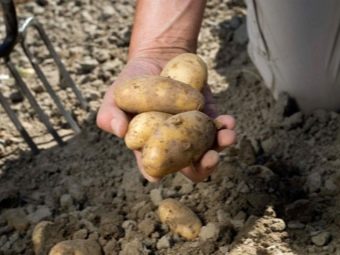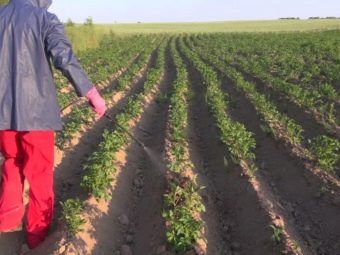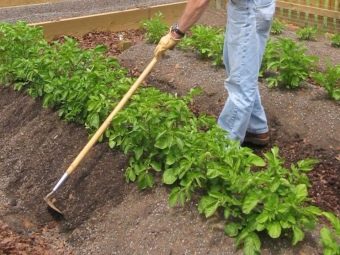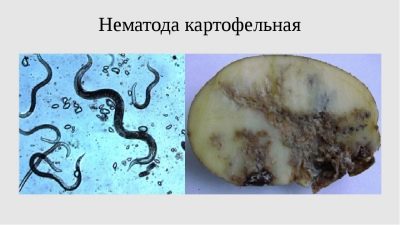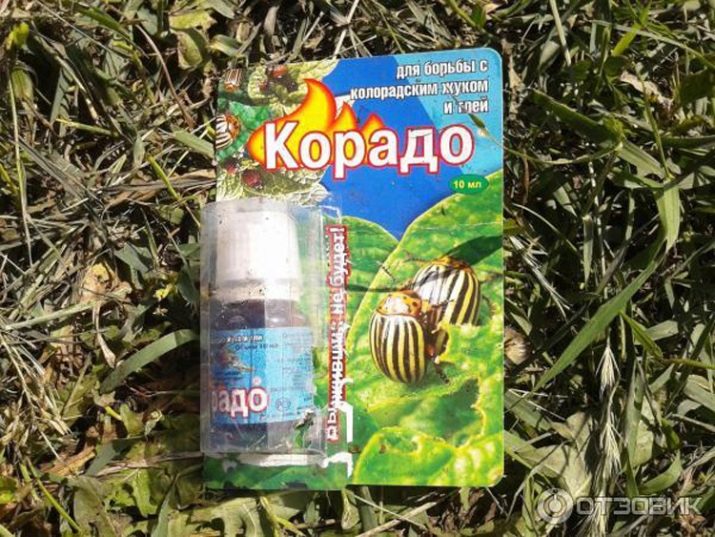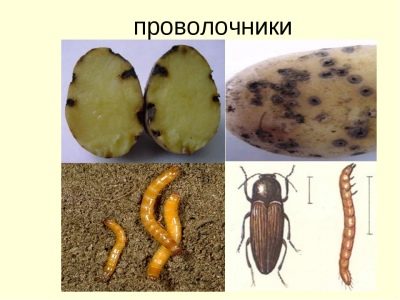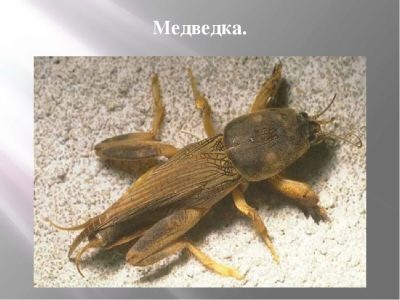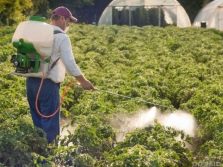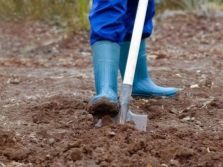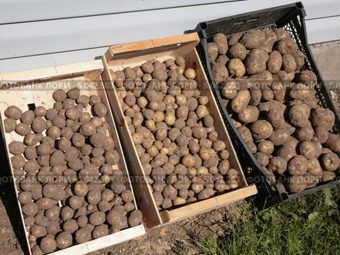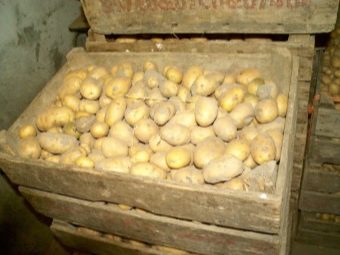How to grow potato varieties "Nevsky"?
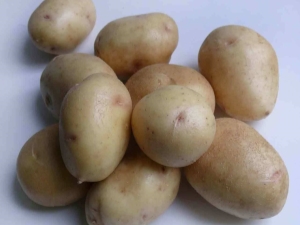
Despite the abundance of potato varieties, every gardener has his most beloved ones, who invariably sow every year. Among these, the Nevsky variety is often found.On the characteristics and rules of cultivation of this species will tell this article.
Special features
The Nevsky potato has been known since 1976, when it appeared as a result of mixing the Candidate and Veselovskaya varieties. It was entered in the State Register in 1982. Today, the Nevsky is one of the most common, they sowed about of the fields, it is actively grown by farmers and "ordinary" summer residents. Such popularity is due to the optimal balance between the taste of the crop, its starch content, high yield and unpretentious care.
Variety refers to the early ripening. The harvest can be collected already in the beginning-middle of August, that is, 75-90 days after the emergence of shoots. Culture demonstrates high yields - up to 10-15 tubers are harvested from the bush. Given that their weight is 90-130 grams, up to 2 kg of crop is harvested from each bush.
Taste "Nevsky" also at the height. Root crops are round, the same shape, smooth. The flesh is white, not crumbly. The starch content in fruits is no more than 15%, so they are good for soups and salads. But for frying and mashing this variety is hardly suitable.
Shrubs have spreading tops, but they are low. The color of the leaves depends on the characteristics of the soil, climate and care. It can be either light green or more saturated. The variety has the ability to recover quickly after eating the Colorado potato beetle. The plant has lush white flowers.
Among the characteristics of the variety is resistance to late blight, cancer. The variety is also resistant to the effects of high temperatures. This is due to the powerful and long root system, so that the plant extracts moisture from the deep layers of the soil. Due to the spreading of the bush can reduce the drying of the soil. And the leaves are able to curl up into a tube in the heat, thereby reducing the surface for evaporation of moisture. Excessive humidity is slightly more dangerous for the bush, but in general, this variety also tolerates it well.
Landing
This variety is suitable for pre-germination, but when planting you need to be very careful about the condition of the sprouts, avoiding their damage. Germination lasts about 10-14 days at a temperature of 15-17 ° C. To do this, choose healthy fruits of medium size. The size of sprouts is about 2-3 cm. Before germination, it is recommended to disinfect the tubers with a weak solution of potassium permanganate.
A suitable primer for the Nevsky variety is sandy or loamy. Waterlogged soils, as well as shaded areas, should be avoided. Do not use fresh manure, as this will adversely affect the taste of the crop. In addition, this method increases the likelihood of phytophthora.
Since the potato is involved in crop rotation, it is not necessary to plant it on the place where other solanaceous crops grew in the past year. In this case, the risk of infection of the bushes with diseases typical of cultures increases. But the soil after growing pumpkin, legumes, beets, corn is suitable. No need to abuse fertilizers, potatoes of this type does not need their excessive amount.
Despite the relative simplicity, this variety requires planting in warm soils (not lower than 14 ° C). Negatively affect its growth and lack of sunlight.
Organic fertilizers are recommended to be applied to the soil: peat, compost, humus, manure, bird droppings (at the rate of about 5-10 kg per 1 m2). After the harvest is gathered, the soil can be enriched with minerals (nitrogen, phosphorus, potassium). Due to their higher concentration, they are introduced in a smaller volume - 20-30 kg per 1 m2.
We recommend making the holes at a distance of half a meter from each other, about 20 cm deep. Between rows it is recommended to keep 60-70 cm. This will simplify the process of leaving, including hilling bushes.
Plant this variety in several ways.The most common used in small areas of the potato field with flat terrain, is digging holes with a shovel. In the resulting grooves, 1-2 tubers are lowered, and sprinkled with earth on top. You can immediately put in the hole a little ash or humus.
It is important to remember that this variety cannot be grown by cutting a large tuber into pieces. Damage of at least 2-3 shoots is fraught with the fact that the bushes will not appear.
The ridge method has become more common in loamy, heavy soils. For this purpose, combs, whose height is not less than 20 cm, are formed by a tractor, a walk-behind tractor or a chopper. Then the width between them is 50-60 cm. Then the tubers are planted at these distances 40-50 cm apart.
Similar to this technology and trench method, optimal for sandy soils. Only in contrast to the ridge, it means lowering the tubers to the bottom of the trench. Its depth is 10-15 cm, and the distance between adjacent trenches is about 70 cm.
Care
After the 20th of July, the Nevsky tops begin to dry out. In mid-August or a little later, you can start harvesting. Usually, at first, several bushes break into the sample to make sure that the tubers are ripe. If the taste does not seem to be ripe enough, then you can “sustain” the tubers for another couple of weeks. However, it is not worth delaying with the harvest, otherwise the potato will begin to wither and shrink in size. To extract the tubers use a pitchfork, a shovel or a walk-behind tractor.
You should not immediately harvest in a bag, you must give it some time to dry in the air, under the sun. Do not dig potatoes on a rainy, wet day. It may rot during storage. When exposed to tubers, for example, with abundant watering or after rain, you can spend mulching. For this, straw is usually used, which then also serves as a humus.
One of the most important procedures for the care of potatoes is loosening. Thanks to him, he manages to improve soil aeration and avoid stagnant moisture. It is convenient to use a rake for work, loosening the soil layer by no more than 2 cm.
During the growing season must be hilling bushes. The process is the formation of a small hillock around the plant using a hoe. The first procedure is carried out when the bush reaches a height of 10-14 cm. Hilling during this period is one of the main preventive measures in combating late blight and root rot, and also stimulates the formation of lateral root processes. After 20-25 days re-earthing is performed.
During loosening and hilling, as well as the need to weed. Weeds removed from the ground should not be left on the field - they attract insects that can provoke the development of rot.
During the active growth of the stems, they can be helped by adding a solution of urea. For 10 liters of water will need 1 tablespoon. This solution is poured half a liter under each bush. Additionally, the plant can also be stimulated during the budding period. To do this, prepare a solution of 10 liters of water, a glass of ash and a tablespoon of superphosphate. Consumption - 0.5 liters per bush. During the formation of tubers, it is permissible to introduce potash supplements, which will increase yields.
Diseases and pests
The manufacturer declares the resistance of the variety to verticillus, cancer, phytophthora, alternariosis, scab. But nematodes pose a great danger to the Nevsky. Without being timely detected and exterminated, this attack is capable of destroying the entire crop.
The difficulty of fighting nematodes (these are small worms) is the inability to detect a lesion at an early stage, since the roots are damaged. However, simple prevention can prevent their occurrence. To do this, carry out a careful selection of seed, processing and disinfection of the soil, regular weeding, loosening.
If the disease could not be prevented, it is better to remove the affected bushes until the nematodes cover the entire field. Sick plants are dug up and burnt, their growing places are disinfected. Nematodes do not tolerate the smell of marigolds. Flowers can be planted around the perimeter of the potato field. If its area is large, then you can place the marigolds and in some places between the rows.
To combat the Colorado beetles, it is enough to treat them with suitable insecticides (“Prestige”, “Corado”, etc.). The procedure is carried out in accordance with the recommendations on the package.
With increased acidity of the soil there is a risk of infection of the tubers with wireworms (small worms, externally similar to a piece of wire). In most cases, this can be prevented by doing a deep (up to 25 cm) soil digging in the autumn. You can increase its efficiency by adding wood ash. Digging should be repeated in the spring. To reduce the acidity indicators allow lime, chalk, ammonium fertilizers.
If tubers are suspected to be defeated by wireworm larvae, bait can be made. A piece of carrot or potato needs to be planted on a stick and dug into the ground so that the end of the stick is stuck on the surface. After 2-3 days, the bait is removed along with the larvae. If necessary, the procedure is repeated.
For adults, the bait is placed on the bottom of a liter jar, which digs into the ground. For every 10 acres need one such bank. After a couple of days, the bank is also being dug up with pests. With a strong defeat, when folk methods do not help get rid of the wireworm, use insecticides. The latter should be applied exactly following the instructions.
During the growing season of the bushes, preventive treatment of them from the bear is recommended. To do this, you can sprinkle the soil with ashes or use special preparations.
In general, to prevent the occurrence of pests, as well as rodents allows deep digging of the soil in autumn and spring. If larvae and worms are found at this time, they should be removed from the ground.
Despite the immunity of "Nevsky" to late blight, improper care can cause damage. Eliminate phytophthora easier, following the principles of planting and care. Too close planting of bushes should be avoided, timely loosening, spud the soil, remove weeds, avoid stagnant moisture.
It is recommended to remove the affected bushes, and for the rest - to carry out preventive treatment. The traditional methods include the infusion of arrows of garlic. Specialized drugs - "Oxyh" (if late blight is observed until flowering) and "Bravo" (used after flowering).
Nevsky does not like high humidity. As a rule, the precipitation is sufficient for its growth. In dry seasons, you can water the bushes once a week, pouring plenty of each of them and making sure that the soil does not erode. It is necessary to water under a root that the water which got on leaves did not provoke a burn.
Storage
Good keeping quality is another virtue of the variety. The optimum storage temperature is + 5 ° C. With the increase of this indicator, the sprouts develop. However, even with the observance of the temperature regime, this process can begin at the end of February. Extend the shelf life and prevent the awakening of the tubers allows the sprouts to be broken off.
If you plan to independently harvest seed for the next year, it is recommended to take the potatoes that appeared on the bushes that have first flowered. They are already in the flowering period should somehow be noted.
Tubers for seeds are dug in the same period as the rest of the crop. Too large, like small ones should be removed immediately. The optimal size - with a chicken egg or a little smaller. Rotten, green and damaged also will not work. You can not use insects damaged by insects - a high probability of being inside the larvae.
A little dried potatoes on the street, it is sent to the cellar, where laid out in wooden boxes in a single layer.After a couple of days, the boxes should be exposed to the sun for a short time in order to start the process of solanine production in potatoes.
Recommendations
Reviews on the grade "Nevsky" mostly positive. It is grown for several years. Moreover, in different summer periods (dry or, on the contrary, rainy), it shows an equally good harvest. Gardeners also note the unpretentiousness of potatoes. It is enough to apply fertilizer during planting, as well as, as necessary, to treat plants from the Colorado potato beetle, nematodes and medvedki.
In the network you can find allegations of insufficiently high taste qualities of the “Nevsky”. However, experienced gardeners are responsible for this by the fact that they just need to be able to grow it. The secret lies in making pure wood ash. It should be placed in the hole, and then use ash-based whey to spray bushes.
This variety does not differ friability, but this figure can be slightly increased. The introduction of a small amount of ash in the hole when planting allows the tubers to become more crumbly.
Planting potatoes in the northern regions is better after pre-heating the soil with black polyethylene. The latter is spread on the ground a few days before planting seeds.
When the threat of frost persists or is threatened, sowing potatoes is also better under the film stretched over the installed metal arcs. After germination, the film is removed during the day and returned to the arc at night when the temperature drops.
A brief overview of the potato varieties "Nevsky", see the video below.

